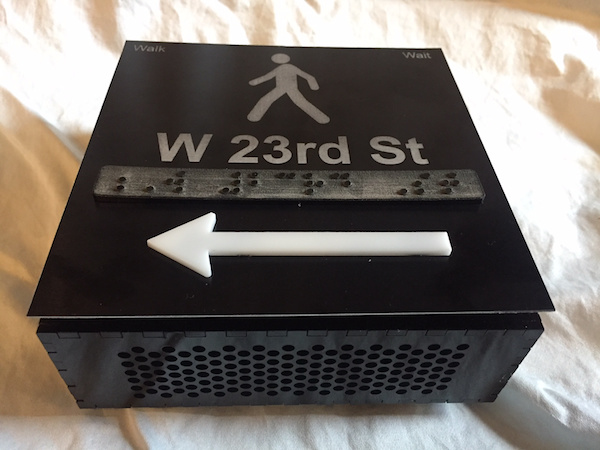I used my Glowforge to prototype a low-cost “talking” sign that helps low-vision and blind pedestrians, and submitted it to the New York City Call for Innovation — Enhancing Mobility for Blind and Low Vision Pedestrians challenge. Wish me luck, I’ll know next week whether this wins!

Here’s some things I learned about using the Glowforge to create tactile and highly visible signage for blind and low-vision people:
- Braille etching works quite well! The dots must be raised, so you’ll need to subtract the acrylic around the dots. To do this, I used a Braille font in Inkscape, and used the path-difference function to “punch out” the dots from a rectangle. Note that Braille signage encodes certain common words and letter combinations as special characters, so you’ll want to use a Braille level 2 translator on your text.
- You can use your Glowforge to etch the top layer of anodized aluminum, which looks really terrific for signs. You’ll need to fiddle with manual settings so you’re not spending much time pointing the laser at the bare metal, otherwise it causes it to heat up and warp (as other threads have discussed, you can’t cut metal, but you can etch it).
- Laser-cut QR codes (which can encode website URLs, serial numbers, or other data) work surprisingly well on most materials, and are a good way to make creations computer-readable.
- I suppose it’s a bit obvious, but white acrylic shapes glued onto a black background really stand out visually and are excellent for tactile signage.
- Glowforge + Raspberry Pi = all sorts of new rapid prototyping opportunities
I wrote this article which gives more project background and accessibility considerations. Let me know what you think!

